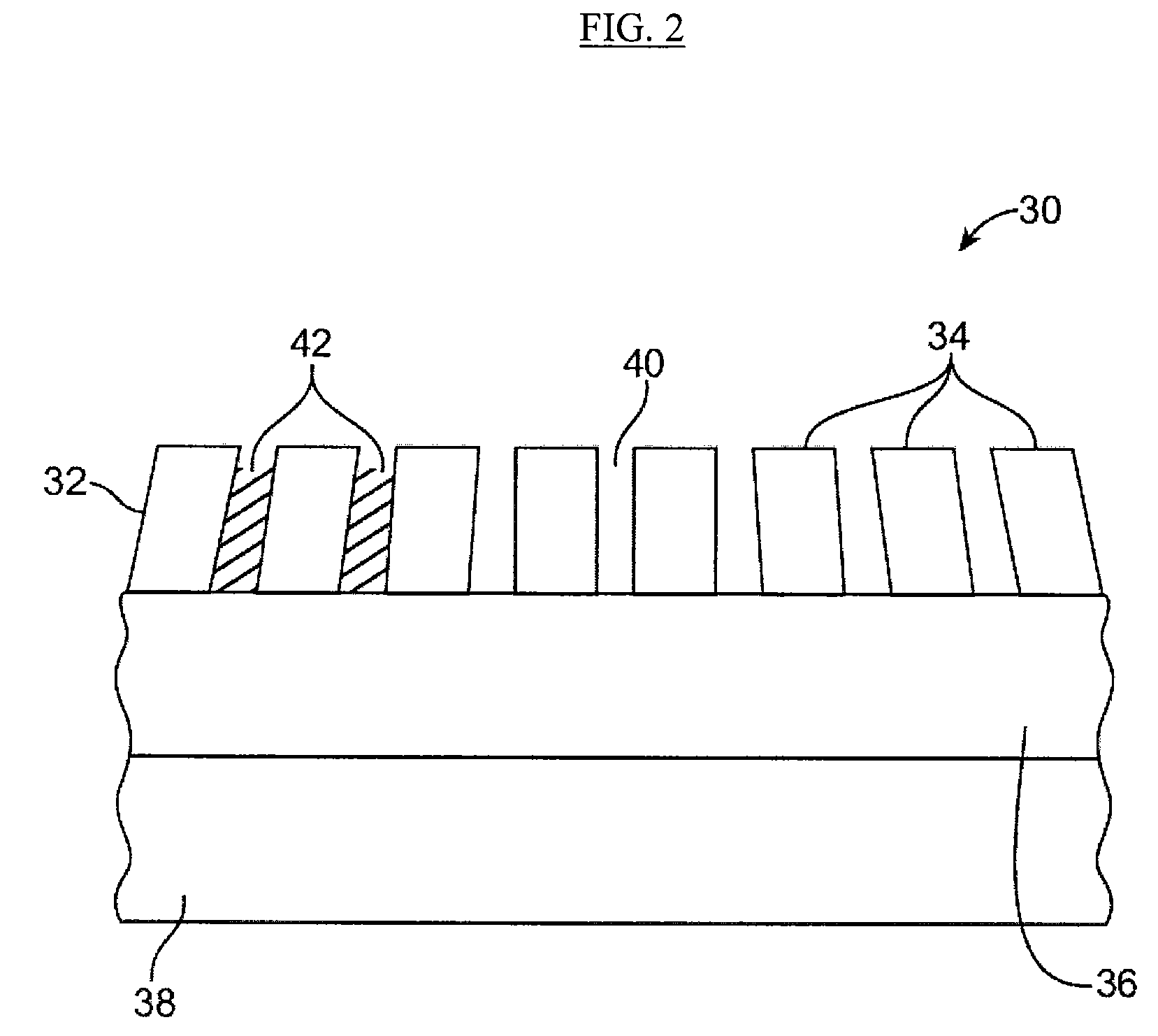Beam-oriented pixellated scintillators for radiation imaging
a beam-oriented, pixel-oriented technology, applied in the direction of tomography, radiography controlled devices, instruments, etc., can solve the problems of reducing the detection accuracy of radiation imaging, so as to improve the detection accuracy and improve the spatial resolution. , the effect of improving the detection accuracy
- Summary
- Abstract
- Description
- Claims
- Application Information
AI Technical Summary
Benefits of technology
Problems solved by technology
Method used
Image
Examples
Embodiment Construction
[0039]The present invention provides beam-oriented pixellated scintillators and radiation detectors having significantly enhanced performance characteristics, including improved spatial resolution, and having reduced and / or minimized parallax errors. A beam-oriented pixellated scintillator of the present invention includes an array of pixels separated by inter-pixel grooves, and the pixels can be oriented to form a beam-oriented array that is matched to the illumination directions of radiation beams reaching the pixels. The beam orientation of the pixels of the array significantly improves detector performance and ensures minimal parallax errors in localizing high-energy photon events (e.g., gamma-rays, etc.).
[0040]Some previously available designs of ring PET cameras orient individual scintillators toward a central area. These, however, include general orientation of each entire scintillator (e.g., scintillator panel) toward a generalized target area. The target object and positron...
PUM
 Login to View More
Login to View More Abstract
Description
Claims
Application Information
 Login to View More
Login to View More - R&D
- Intellectual Property
- Life Sciences
- Materials
- Tech Scout
- Unparalleled Data Quality
- Higher Quality Content
- 60% Fewer Hallucinations
Browse by: Latest US Patents, China's latest patents, Technical Efficacy Thesaurus, Application Domain, Technology Topic, Popular Technical Reports.
© 2025 PatSnap. All rights reserved.Legal|Privacy policy|Modern Slavery Act Transparency Statement|Sitemap|About US| Contact US: help@patsnap.com



